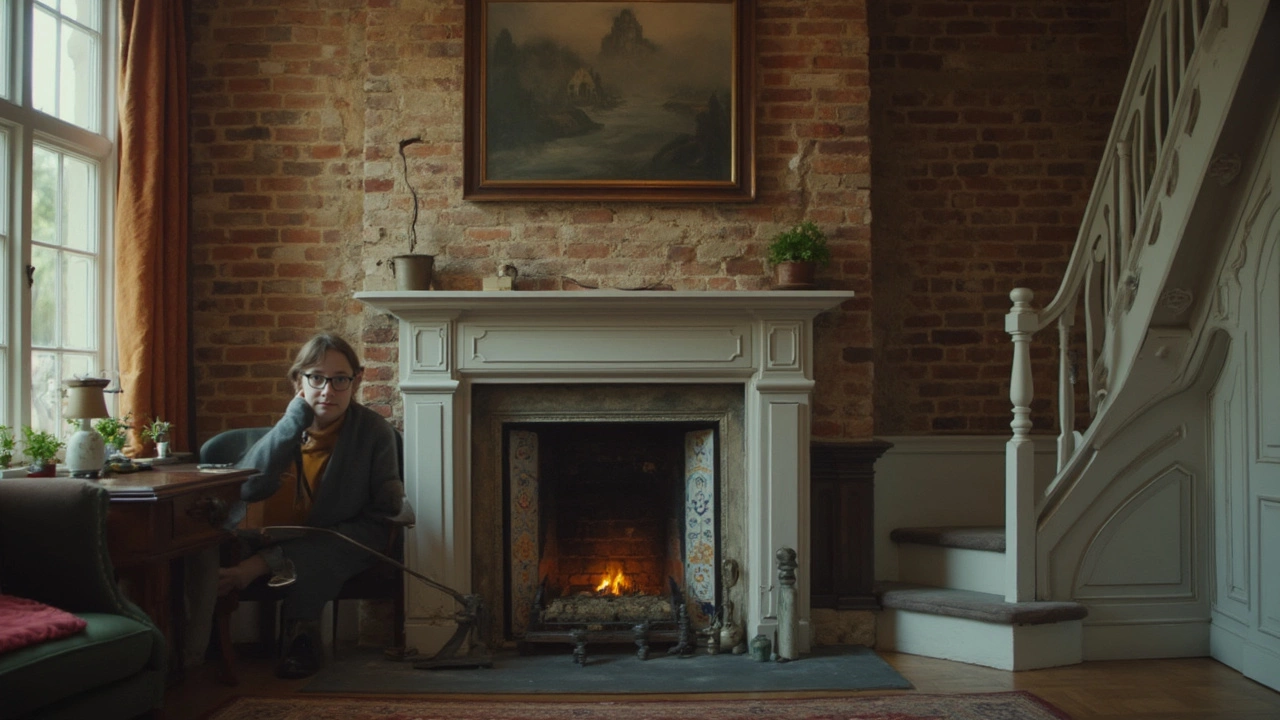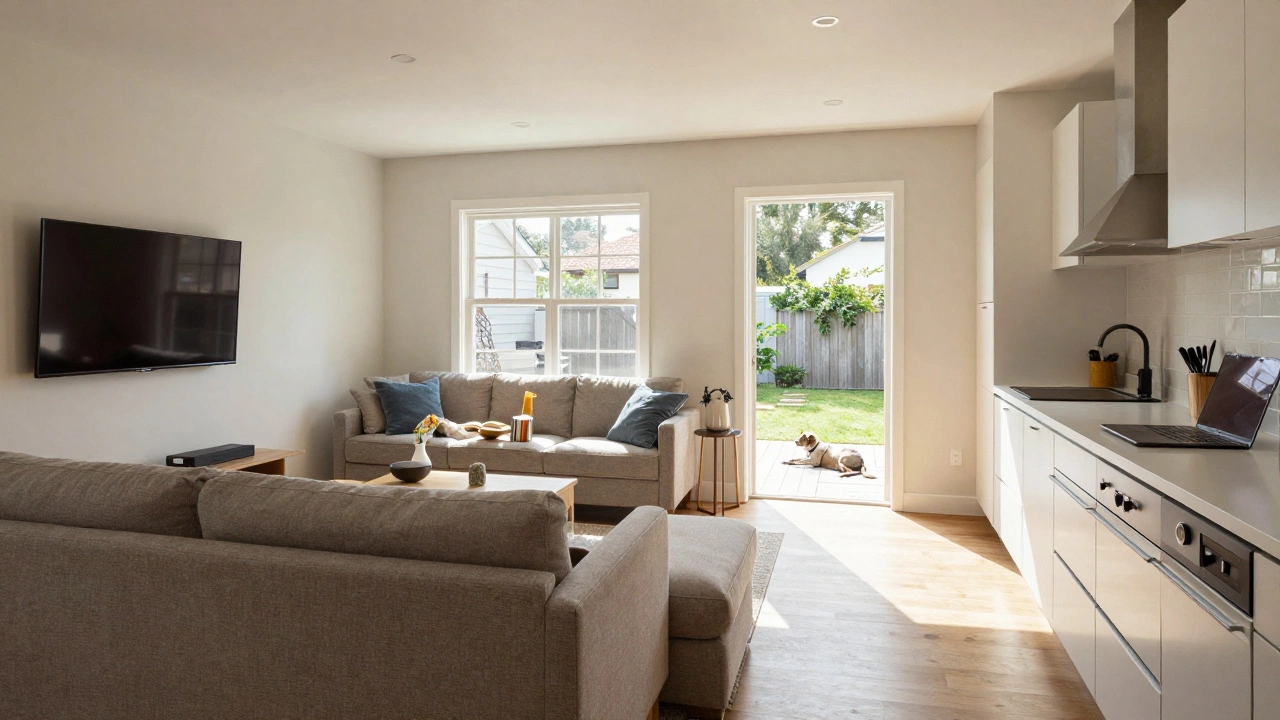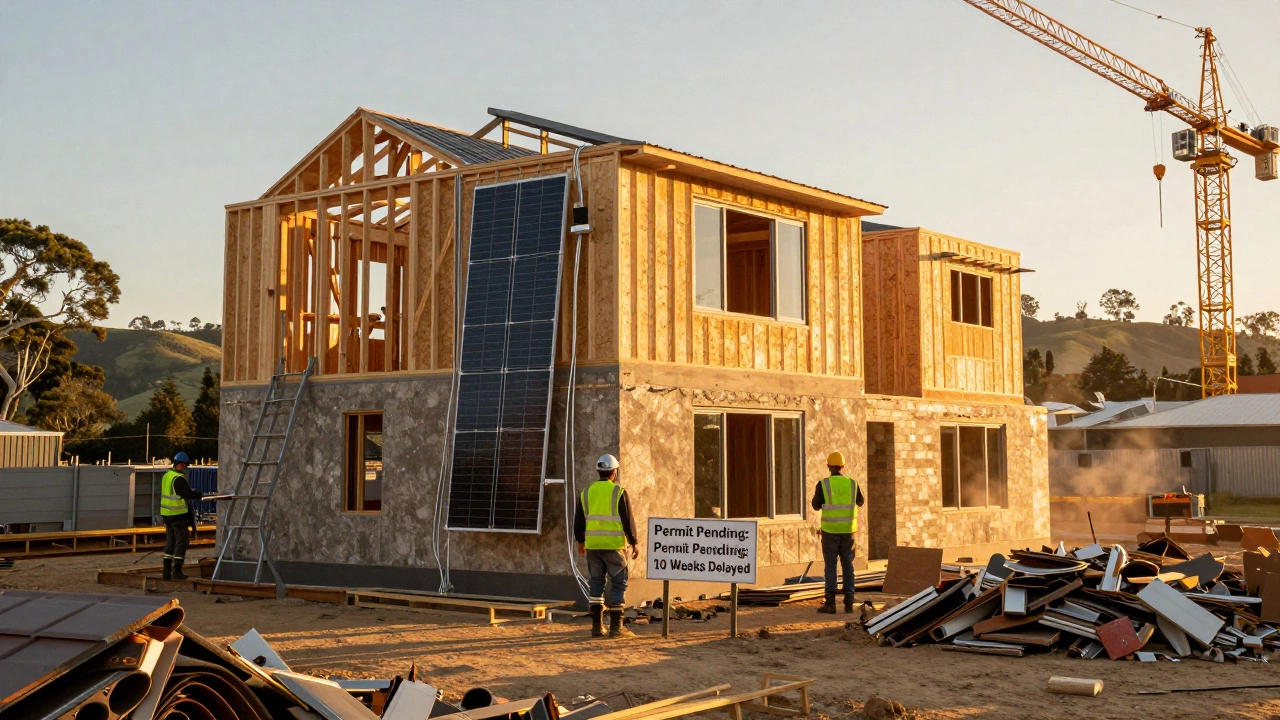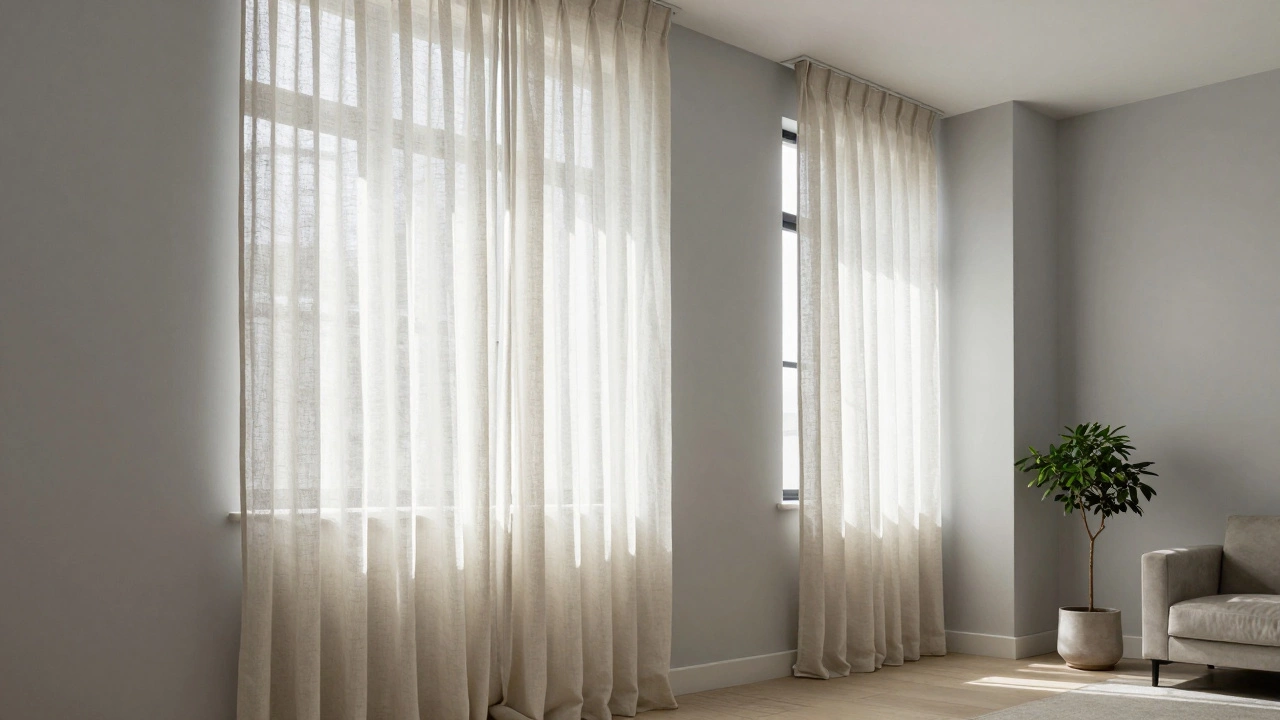Spotting cracks around a 100-year-old house can make anyone uneasy. Your first thought might be, "Is the place falling apart?" But here’s the truth—cracks in old houses are more common than you think. Buildings settle over time, and materials expand and contract with the seasons. So, seeing some hairline cracks isn’t exactly a shocker.
The important thing is knowing when a crack is just normal aging and when it’s something more serious. Not every crack is out to ruin your house or send your budget spiraling. Some are just the result of plaster drying out, old wood shifting, or bricks breathing through another year of hot summers and cold winters. Getting to know your home’s quirks can save you from pointless panic and help you spot real problems before they get out of hand. If you want to keep your hundred-year-old home standing strong, understanding those cracks is step one.
- What Causes Cracks in Old Houses
- Types of Cracks: Cosmetic vs. Structural
- When to Worry: Signs of Serious Problems
- How to Address and Repair Cracks
- Tips for Living in and Maintaining a Century-Old Home
What Causes Cracks in Old Houses
If you live in or look after a house that hit the century mark, cracks come with the territory. Buildings built a hundred years ago weren’t made with the same methods or materials as modern homes. The way wood shrinks, bricks settle, and mortar ages creates plenty of little shifts and moves—cracks follow.
Let’s break down why these cracks pop up so often in older places:
- Old house cracks often start with settling. Every house moves a bit as the ground underneath it shifts. This process is called “settlement,” and it can take decades, especially when the land was filled in before building.
- Wood dries out and shrinks, especially in places where the house isn’t perfectly sealed from air and moisture. Floorboards or beams might get smaller, pulling on walls and causing splits or cracks in plaster or drywall.
- Bricks and mortar age and slowly break down. Mortar, the stuff that holds bricks together, was often softer in the past. Wind, rain, and freezing winters wear it out, letting bricks shift just enough to start cracks.
- Temperature changes matter, too. Hot summers and freezing winters mean materials expand and contract year after year. Over time, something’s bound to give—usually the brittle old plaster covering the walls.
- Water is one of the biggest culprits. Leaky gutters, poor grading, or a high water table can all put pressure on foundations. Extra moisture weakens soil under the house, leading to even more movement upstairs.
Here’s how some of these issues stack up in old homes:
| Cause | More Common in Old Homes? | What To Watch For |
|---|---|---|
| Foundation settling | Yes | Cracks near doors, windows, or in basement walls |
| Wood shrinking | Yes | Hairline splits in walls, ceilings, or floors |
| Brick/mortar wear | Yes | Gaps between bricks or crumbling mortar |
| Temperature swings | Yes | Seasonal cracks that seem to grow or shrink |
| Water intrusion | Yes | Cracks paired with stains, mold, or musty smells |
The bottom line? Cracks usually show your house is just doing what old houses do—adjusting to time, weather, and the occasional blunder from previous repairs. Check where the cracks are, how big they get, and if they keep coming back. That’s the key to figuring out if you’re seeing normal wear or something that needs fixing, fast.
Types of Cracks: Cosmetic vs. Structural
Not every crack means trouble. Some are just part of the aging process, while others could be warning signs. Here’s how you can tell the difference between ones you can paint over and ones that could lead to bigger headaches.
Old house cracks can usually be sorted into two buckets: cosmetic and structural. Cosmetic cracks pop up in plaster, drywall, or paint. They’re often hairline (less than 1/8 inch wide), run along corners or joint lines, and don’t change much over time. They might just be the building "breathing," or the aftermath of a rough winter or hot summer. You’ll see these a lot around windows, doors, or ceilings.
Structural cracks are another story. These mean the foundation, beams, or support walls might be in trouble. They’re wider (over 1/4 inch), keep growing, or show up suddenly. These cracks don’t mess around—they’re often jagged, step-shaped in brickwork, or run diagonally across your walls. Doors or windows might stick, or you notice uneven floors. Don’t wait on these—get a professional to check them out.
- Cosmetic cracks: usually under 1/8 inch wide, don’t change, show up in finishing layers
- Structural cracks: often wider than 1/4 inch, get longer or wider, show up in foundation or main walls
Here’s a quick look at the key differences:
| Type | Location | Width | Shapes/Patterns | Should You Worry? |
|---|---|---|---|---|
| Cosmetic | Plaster, drywall, trim | < 1/8 inch | Straight, along joints/corners | No, just keep an eye |
| Structural | Foundation, brick, main structural walls | > 1/4 inch | Jagged, stair-step, diagonal | Yes, get it checked |
If you spot cracks that keep getting bigger or come with other signs—like doors not closing right, or sloped floors—it’s best not to ignore them. But if it’s just a thin line in the corner that hasn’t gone anywhere in years, you probably have nothing to worry about.

When to Worry: Signs of Serious Problems
Not all cracks in a 100-year-old house are created equal. Some can signal serious trouble, especially if you notice them popping up quickly or getting worse over time. So how do you spot the difference?
First off, keep an eye on wide or jagged cracks, especially if they’re more than a quarter inch across. Vertical or diagonal cracks shooting from the corners of doors and windows are often just settling. But if you see horizontal cracks in brick or foundation walls, that’s a red flag. These usually mean the wall is under pressure, possibly from shifting soil or a sinking foundation.
If you see cracks paired with doors or windows sticking, floors sloping, or gaps opening between walls and ceilings, it’s time to dig deeper. Even worse, if one side of the crack looks higher than the other, the house could be shifting or sinking unevenly. Don’t ignore big cracks in your basement or crawl space, especially if water is sneaking through—moisture can make foundation headaches even worse.
- old house cracks running in a stair-step pattern along mortar joints are another sign of movement in brick walls.
- If you notice nails popping or drywall seams separating near big cracks, that’s more than just settled plaster—it could mean structural issues.
- Cracks wider at the top than the bottom or cracks opening and closing depending on the season often point to ongoing movement beneath your home.
If any of these sound familiar, snap a few pictures and track whether things change. If the cracks grow or new ones appear, it’s best to call in a structural engineer or a trustworthy foundation expert. Catching the problem early could save you a ton of money and future hassle.
How to Address and Repair Cracks
Fixing cracks in a 100-year-old house isn’t about making things pretty—it’s about stopping small issues from growing into big headaches. The first thing you want to do is figure out what kind of crack you’re dealing with. If it’s thin, less than 1/8 inch wide, and not changing over time, it’s usually not a big problem. Thick, jagged, or growing cracks could mean deeper trouble and should be checked by a pro.
Here’s how most people tackle minor cracks in walls, especially plaster and drywall:
- Clean the crack: Use a small brush or even a vacuum to clear out dust and loose bits. If you skip this, the repair patch might not stick.
- Widen just a touch: For hairline cracks, use a utility knife to widen the crack slightly. This helps the filler grab better.
- Apply filler: Pick up spackling paste or joint compound from any hardware store. For bigger wall cracks, go for a vinyl patching compound. Smooth it in with a putty knife.
- Let it dry: Most compounds need several hours—sometimes overnight—to dry fully. Check the label.
- Sand smooth: Use fine-grit sandpaper to even out the patch before you paint or finish.
- Paint or touch up: Once it’s smooth, match the wall’s color and you’re good to go.
If you find cracks in your bricks or foundation, don’t just slap on some filler and hope for the best. Get an expert’s opinion—foundation fixes are a whole different animal, and patch jobs won’t cut it if the building is shifting or sinking.
Here’s a quick look at common home crack issues, average repair costs, and when to call in a pro:
| Crack Location | DIY Fix Cost | Pro Repair Cost | Call A Pro? |
|---|---|---|---|
| Interior plaster/drywall | $10–$30 | $150–$350 | No, unless multiple large cracks |
| Brick exterior (minor) | $15–$40 | $300–$700 | Yes, for large/growing cracks |
| Foundation | N/A | $2,000–$10,000 | Always |
Remember, a old house cracks don’t always spell disaster, but ignoring the wrong ones could mean big trouble—and a big bill—later. Don’t be afraid to call in a structural engineer if you’re unsure. Spending a little upfront can save you a ton in repairs down the road.

Tips for Living in and Maintaining a Century-Old Home
Owning a house that's seen a hundred years is pretty cool, but it's not quite the same as maintaining a new build. Century-old homes need a different kind of care. Forget picture-perfect walls—these places have history baked into every corner. That comes with unique upkeep needs and a few surprises, but nothing you can't handle if you know what to watch for.
First, get a handle on the home’s quirks. Make a habit of walking around the house every season and keeping a list of changes, like new cracks or sticky doors. Small shifts can be normal, but if you notice anything new or worsening over time, flag it for a closer look.
- old house cracks: Know the difference between little cracks from settling and bigger issues from things like too much moisture or foundation trouble. If a crack is wider than a quarter inch or zigzags through bricks, it’s time to call in a pro.
- Check for leaks after big storms. Older roofs, windows, and gutters can let water in places you might not expect. Damp basements or peeling paint indoors are big clues something’s up.
- Look at your plumbing and wiring. Most homes from the early 1900s started with knob and tube wiring or cast iron pipes. If those haven't been updated, keep an eye out for flickering lights or weird smells—don't hesitate to ask a licensed electrician or plumber what needs upgrading.
- Stay on top of basic repairs. Patch small cracks right away and repaint every few years with quality paint that breathes, especially if your walls are plaster. Slow and steady maintenance saves bigger headaches down the line.
- Humidity matters. Even if you don’t feel it, changing moisture in the air causes wood floors and trim to swell and shrink. Run a dehumidifier in summer and use a humidifier in winter to keep things stable.
Check out this quick table for some useful numbers and maintenance cues:
| Task | How Often | What to Watch For |
|---|---|---|
| Foundation and wall inspection | Twice a year | Cracks wider than 1/4 inch, bulging walls |
| Roof check | Every fall | Missing shingles, leaks in attic |
| Plumbing tune-up | Annually | Discolored water, slow drains, old pipes |
| Paint touch-ups | Every 3-5 years | Peeling, flaking, or bubbling paint |
| HVAC servicing | Annually | Uneven heating/cooling, strange noises |
Last thing—don’t put off stuff that seems small today. Maybe it’s just a hairline crack now, but those little signs are an old house’s way of telling you what it needs. With regular checkups and staying ahead on the basics, you can enjoy your slice of history without nasty surprises or big repair bills.






